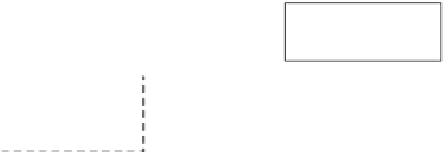Information Technology Reference
In-Depth Information
front-end
broker
back-end
1
*
Application
Task Service
Worker
remote
Task Handler
task_list
«use»
Task
«execute»
target_code
parameters
Fig. 1.
Distributed task scheduler architecture
a.
Front - end
.Itiscomposedof
Task Handlers
and
Applications
.Theformeris
a module designed to provide a high level API for task creation, task control
(run, stop, pause, cancel, delete) and to handle notifications. Every Task
Handler controls a task list and uses a messaging system to connect them
with the rest of the components. An Application uses the Task Handler API
to orchestrate the tasks execution flow which has the logic related to every
specific problem.
b.
Broker
. Encapsulates all services related with task distribution, load balanc-
ing, remote communications requirements and response messages routing. It
is called
Task Service
. Each node must have a single instance of the latter
running. Task distribution can be either dynamic or static. Dynamic schedul-
ing may include different load balancing methods, fault tolerant strategies
and automatic network discovery functionalities. On the other hand, static
scheduling can use simple selection methods like a static weighted round-robin
scheme.
c.
Back-end
. Its main components are the
Workers
. Their responsibility is
to actually execute tasks. They are highly configurable: number of them,
resources allowed to be used and permissions.
Shared Data Storage.
Analogously to the
task
-related architecture, it is nec-
essary to define an architecture for data handling which provides functionalities
for CRUD
1
operations on atomic data and every other required actions on data
sets — like searching or listing. The atomic data will be handled as a
Document
that represents different kind of data: variables, files, images or tasks; could be
extended to any other datatype. The categories in this case are front-end and
back-end showed in Figure 2.
1
Create, Read, Update, Delete.



























